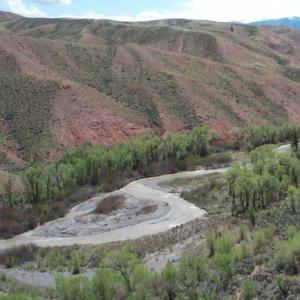Collaboratively Producing Climate Information for Managing Natural Resources
Date
by Ulyana Peña and Molly Cross
Putting science into policy and practice has been a long-standing challenge, especially in the realm of climate change and adaptation to climate change. To better guide future climate science investments, researchers would benefit from an understanding of what information is most relevant to managers. Doing this work in a collaborative way embraces the principles of knowledge co-production, where managers provide direction on science questions and actively participate in the creation of new knowledge and information that is useful to their decision-making. An example of this is an effort by the Wyoming Game and Fish Department to include climate change considerations in an update of their Statewide Habitat Plan. While the 2015 predecessor to this plan included just a single mention of climate change as one of several threats facing habitat management in Wyoming, the current version makes climate change a major focus, woven throughout the text, including specifics on impacts to river, riparian and wetland habitats in the state and strategies for addressing those impacts.
A new paper by Cross et al. (2022) documents and evaluates the co-production methods used by the author team to assist with Wyoming’s updated Statewide Habitat Plan. The paper additionally shares lessons learned about the co-production process to help other practitioners working to support similar types of climate-informed natural resource management planning. Managers from the Wyoming Game and Fish Department and climate researchers from outside of the agency worked together to co-produce an understanding of climate change impacts facing key habitats in Wyoming and actions the agency and partners could take to address those impacts and help wildlife and habitats adapt to a changing climate. As Cross says, “Early conversations related to the project revealed that the Wyoming Game and Fish Department was interested in including climate change considerations in their State Habitat Plan, so the timing and opportunity was right for this project to support that effort.”
Climate adaptation actions included designing specific restoration activities for native species to thrive under future climate conditions and prioritizing places for protection that are likely to remain suitable for focal species longer into the future. This information was then included in the updated Statewide Habitat Plan for Wyoming. The plan also included a climate-related “scoring” criteria, to evaluate projects proposed for annual funding. To score more points, a project proposal needs to describe how actions will increase the resilience of a habitat to climate change and provide climate adaptation benefits to numerous species. Given that it can take time for a plan to result in new or altered actions on the ground, future work could look at whether and how the updated plan motivates a shift toward the implementation of climate-informed practices.
For practitioners of climate knowledge co-production, the paper aims to provide them with specific methods effective at achieving goals related to the use of climate information in natural resource management, and that can be replicated or tailored to meet the needs of others doing this kind of work. One key finding suggests that increased investment in “boundary spanner” organizations and individuals—intermediaries with relevant science and management expertise that enable exchange between knowledge producers and users—would be beneficial in supporting more climate-informed natural resource management.
Image: Wyoming Game and Fish Department


